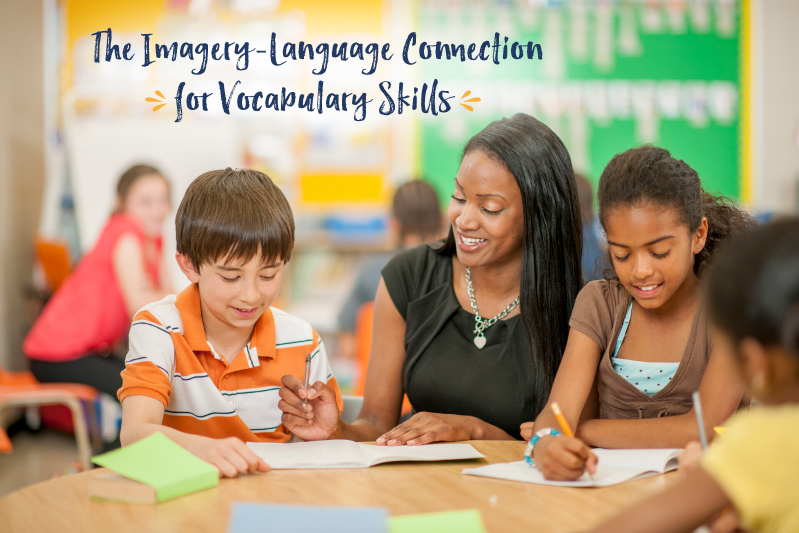The Imagery-Language Connection for Vocabulary Skills

Today’s standards-based English Language Arts curricula have put a new spotlight on reading comprehension and vocabulary. To function in the classroom and do well on assessments, students are expected to have strong “everyday” language skills in addition to acquiring academic words—this is key for college and career readiness. At the same time, US schools are educating increasing numbers of students with diverse needs, including English Language learners. Explicit teaching of vocabulary has become a critical part of preparing students for the 21st century.
Now, more than ever, educators are challenged to teach for understanding of new terms, rather than using memorization techniques of the past. To do well, students will need to be fluent with sophisticated words like commit or traverse as well as a subject matter term like photosynthesis. While states and districts may outline clear vocabulary goals for their students by grade level, the method for teaching vocabulary skills is not always clear, even for students receiving intervention.
Teaching methods do typically fall into one of the following categories: 1) close reading/text analysis, 2) students demonstrate understanding through using words in context, and, 3) practice. However, high expectations and the opportunity to practice are not always enough. Students who have weak vocabulary skills will struggle with typical classroom practice. What’s more, teachers may find these activities do little to actually improve outcomes for their most challenged students.
It is not surprising, then, that students who struggle most with vocabulary are placed in Tier 3 intervention or are referred for special education services. It can often be difficult for schools to discern if a student is struggling because of a learning difficulty or due to an isolated vocabulary weakness.
A Missing Connection
To thrive in today’s English Language Arts classroom, students need rapid recall of words they know and the ability to capture, learn and remember new terms. Activities like close reading and practice are, in fact, after-the-fact techniques that aim to draw student attention to unfamiliar vocabulary but may not address why a student could not understand a new word in the first place.
Clinical research over the last thirty years indicates there is a separate comprehension weakness that is rarely identified. This weakness often undermines the reading process. It is a weakness, based in the sensory system, in creating an imaged gestalt or “whole.”
Students with weak vocabulary may have difficulty creating mental images for language. This weakness causes individuals to get only “parts” of information they read or hear, but not the whole.
Teachers can develop their students’ vocabulary and comprehension by using language that connects to imagery. Teachers can use language that stimulates imagery when lessons include new, essential vocabulary. For example, during a lesson on photosynthesis, asking questions like, “What are you picturing for what the sunlight is doing?” and, “What do you see happening?” During practice time, teachers can use language that prompts students to draw on images. Instead of, “Do you remember the steps of photosynthesis?” teachers can ask, “What are you picturing for photosynthesis?” and “What do you see happening next?”
Teachers using the Visualizing and Verbalizing program for Language Comprehension and Thinking can make a difference for students by changing their ability to process new words. Instructors can use this technique to scaffold skills as part of a Tier 2 program, as part of a Tier 3 intervention, or, starting in primary Tier 1 classrooms—giving students a solid foundation for years to come. Teachers can help their students develop the ability to:
- Image the meaning of a word
- Store imaged word meanings
- Rapidly access and retrieve word meanings
Schools partner with Lindamood-Bell for professional development workshops and RtI plans that make a difference for students, including SPED and EL learners.
Visualizing and Verbalizing develops the underlying skills necessary for standards-based learning across the curriculum:
- Oral Language Development
- Acquiring Academic Vocabulary
- Reading Comprehension
- Critical Thinking
Explore our professional development workshops and contact us with any questions or to discuss how your school can get started: 800-233-1819.
For information on how to address core standards learning for all students, watch our recent webinar, Beyond Expectations: Language Comprehension and Thinking for State Standards Curriculum.





